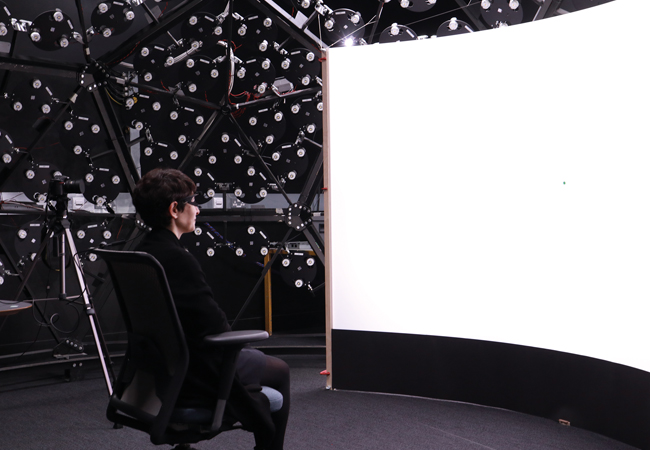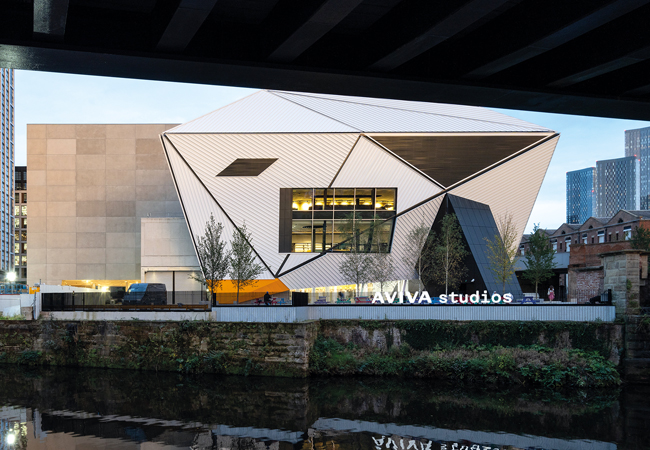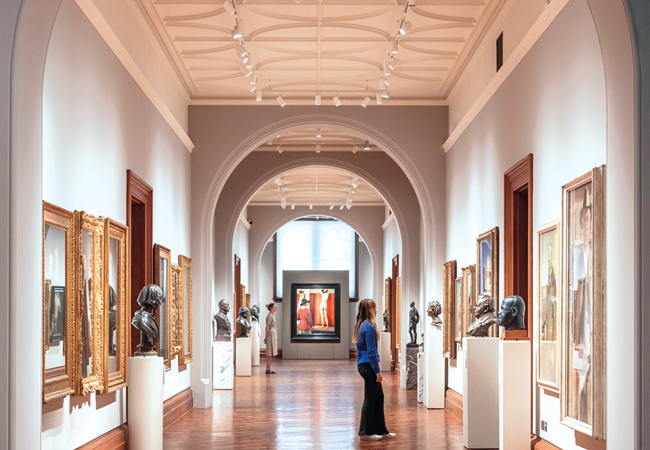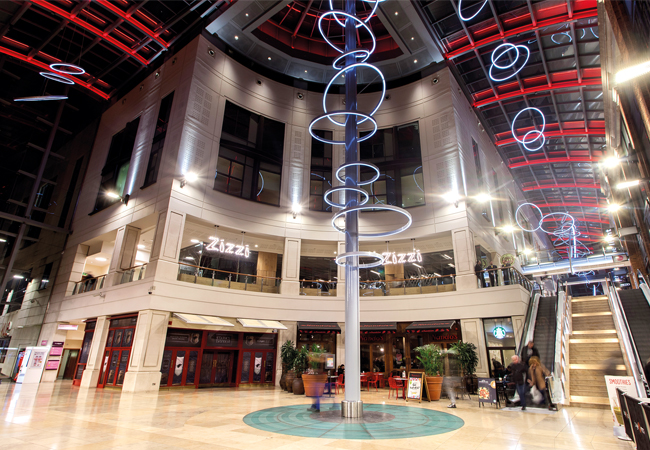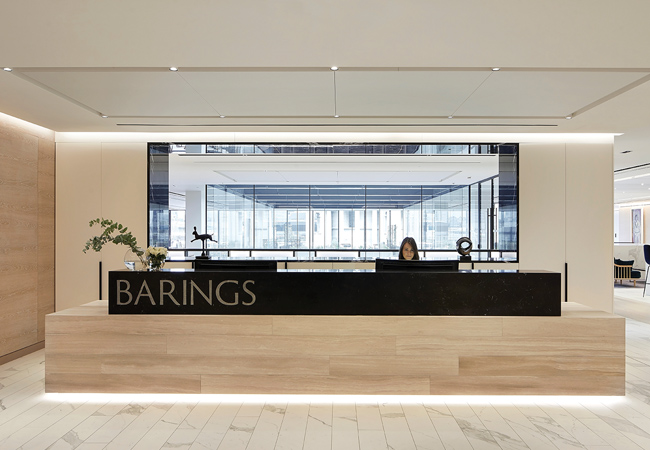
Hoare Lea’s scheme for Barings, London, exemplifies the move from the horizontal plane, using uplighting and perimeter cove lighting, as well as downlighting to create a bright, layered volume (architect: TP Bennett)
Progress in society, science and technology often depends on a paradigm shift – and we believe one is needed in the way interior lighting is generally practised. By this we mean designers must stop designing lighting to deliver a specified uniform illuminance on a horizontal working plane and, instead, give priority to lighting the space rather than just focusing on the visual tasks.
There are four reasons for this belief:
- Today, a lot of the information necessary to perform a task is delivered through self-luminous screens, so task illumination is not required.
- The number of tasks that require visibility of fine detail is much reduced, partly because of the availability of good-quality photocopying and printing, and partly because of the growth in machine vision, computer power and robotics.
- Light generates visual and non-visual responses important for human health and wellbeing. This is directing attention away from lighting the task to light received at the eye. Lighting that delivers a set illuminance on a hypothetical horizontal working plane is irrelevant to what should be the main functions of lighting: making the whole space visible and supporting human health
- Continuing to define good lighting by nominal task illuminance delivered to a horizontal working plane means we will miss a chance to save energy and money.

Left to right: Kevin Kelly FCIBSE FSLL, Kit Cuttle, Dr Peter Boyce and Professor Peter Raynham
Current practice
Lighting is undertaken by a number of groups, ranging from designers, equipment manufacturers, architects and building services engineers to electrical contractors. These have varying levels of expertise and different income streams, so the amount of time spent on lighting design varies – but they do have two things in common. They all use software to develop their designs, and they follow illuminance standards produced by national and international bodies. To do otherwise poses a risk of litigation should the client be dissatisfied.
The consequences of current practice are many and varied. By designing for a nominal task illuminance on a horizontal working plane, light is delivered where it is not needed at a level that is not necessary. In other words, energy is wasted. Further, there is a risk that lighting will be seen as a simple commodity where innovation and creativity are limited and price is everything.
The objective
To achieve the paradigm shift, the lighting standards produced by bodies such as ISO, CEN, CIE and SLL must change from illuminances and illuminance uniformity on a horizontal plane to minimum ambient illuminances, which is defined as the average flux density of the indirect flux field within the volume of a space. It involves consideration of the distribution of light in the space and can be expected to relate to people’s perceptions of the space. It would be a better way to quantify the non-visual impact of lighting, as it estimates the amount of light received by the eyes.
A suitable design method, the Lighting Design Objectives (LiDOs) procedure, exists. It requires the practitioner to specify the objectives of the lighting installation. Once this is done, the ambient illuminance can be determined and target surfaces to receive direct flux selected, enabling objectives to be met by adjusting the target/ambient illuminance ratio values. This can cover situations ranging from where visually difficult tasks occur and the ambient illuminance is insufficient, to creating distributions of emphasis to achieve envisaged visual effects. The LiDOs procedure is very flexible. It even allows a uniform illuminance across a horizontal working plane if that is the objective.
How to get there
We will need the support of designers, manufacturers, regulators, professional bodies and architects. Among the questions to be addressed are:
- How will lighting practice be changed?
- Will the change increase energy consumption?
- What are the costs of ambient lighting compared with the current practice?
- What are the opportunities for the lighting industry?
- Will it lead to architects and lighting designers working more closely together?
- Can design software be rewritten to support the LiDOs procedure?
- What form should lighting standards take?
- How can daylighting be incorporated into the LiDOs procedure?
Several activities are needed before the desired paradigm shift can occur:
- Research to identify suitable metrics for quantifying ambient lighting and appropriate levels of these metrics for inclusion in standards is essential.
- Research to establish that ambient lighting results in a better human response to an interior than current practice, on first sight and after prolonged exposure.
- Development of a reliable and robust ambient illuminance meter.
- Research to estimate the financial and energy costs of implementing an ambient lighting approach relative to current practice, including any attempts to influence human health with light.
- The present understanding of lighting efficiency may be turned upside down – and needs further investigation.
- A transitional phase is likely to be required if the movement from standards based on task illuminance on a horizontal working plane to ones based on ambient illuminance is to succeed. A transitional lighting standard would have application tables based on current practice (illuminance and uniformity) and for ambient lighting (MRSE, MICI, TAIR, and so on). This would allow lighting practitioners to use whichever approach they thought best for a given project. Lighting regulators, such as those revising EN 12464-1, should prepare by providing information on the ambient lighting approach as soon as possible.
For a shift to ambient lighting to occur we must lift our eyes from the horizontal working plane and see the opportunities for presented by ambient lighting.
About the authors
Kevin Kelly FCIBSE FSLL is professor emeritus at Technological University Dublin; Kit Cuttle FCIBSE FSLL is a lighting consultant; Dr Peter Boyce FSLL is editor of LR&T and Peter Raynham is professor of the Lit Environment at UCL



